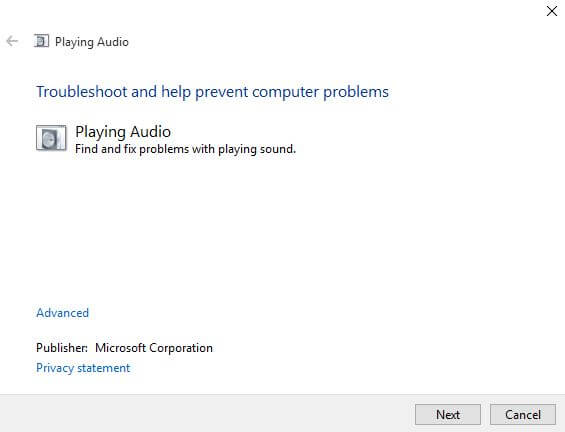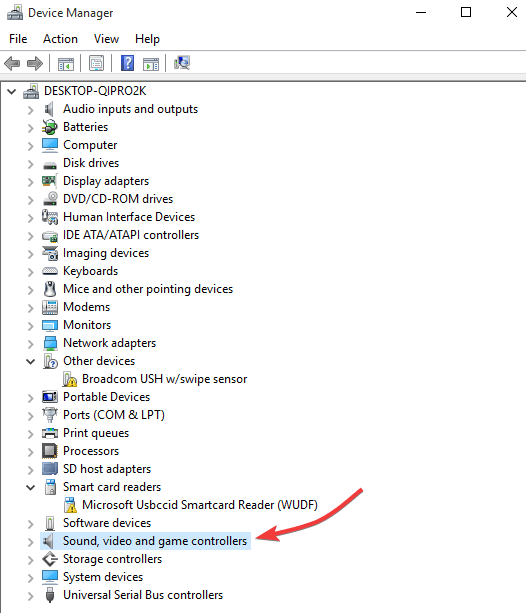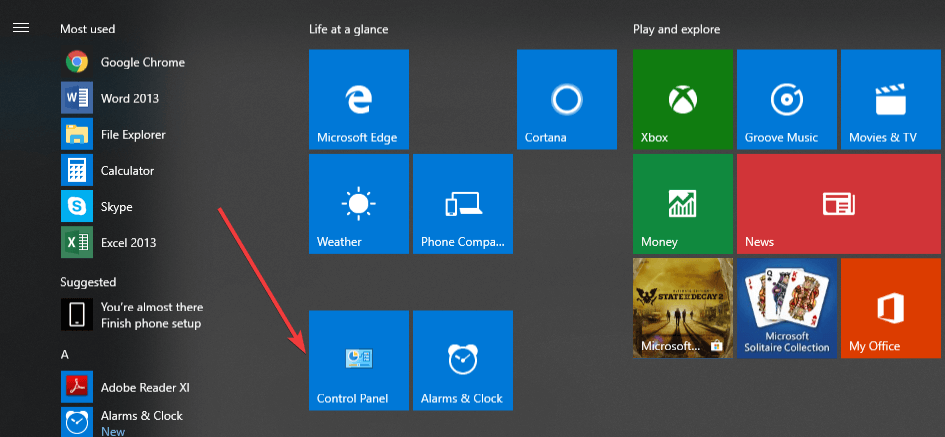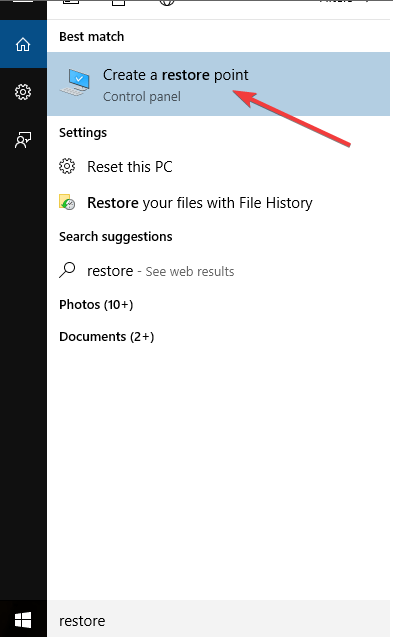Windows System Sounds Are Too Loud: How to Fix Them
When the volume is too loud on lowest settings, it's time to take action
9 min. read
Updated on
Read our disclosure page to find out how can you help Windows Report sustain the editorial team Read more
Key notes
- Volume issues could ruin your entire experience, so let us help you out if the volume is too loud.
- Users have reported that their headphones are too loud despite being on the lowest setting.
- The problem may appear due to software glitches or it could be hardware-related.
- Therefore, try to restore the original audio driver or use a top-notch equalizer.
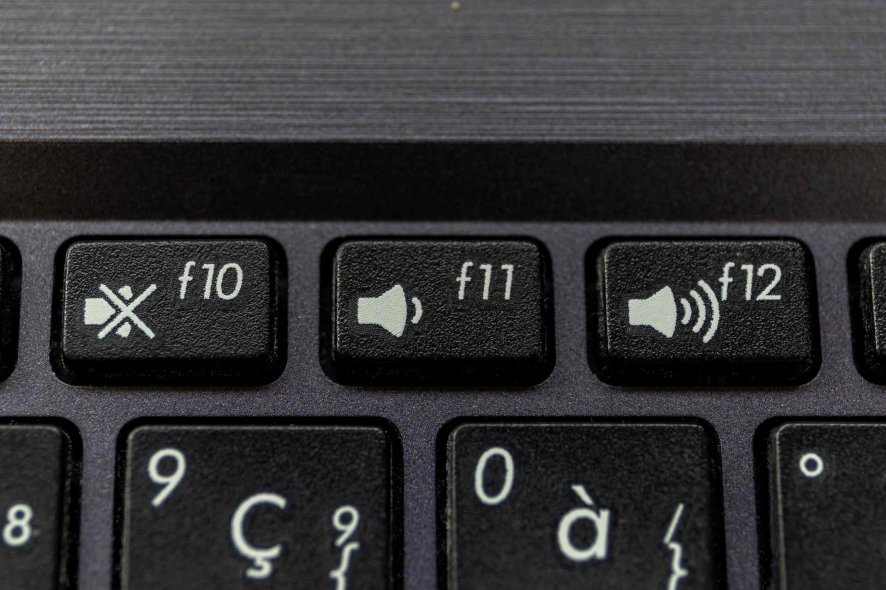
Is your system sound too loud in Windows 10 or Windows 11? Are you seeing the volume display showing as a lower level yet it plays on maximum volume, and turning it up doesn’t help?
If this is the case, or you’re having a similar problem with different specifications, then your machine could be having sound problems.
Sound issues come up when there are audio driver problems or sound files and settings are changed, resulting in the controls in the sound mixer being greyed out.
Read on to find out what to do when Windows system sounds are too loud on your device.
How can I fix Windows system sounds being too loud?
There are different ways to resolve the issue of the Windows system sounds being too loud, but you could start by rebooting your machine and installing any pending updates.
If the problem persists, you can try the solutions below to see if it goes away.
1. Restore the original audio driver
This quickly resets audio settings for the audio or sound hardware, causing Windows to reinitialize the audio configuration.
Depending on your kind of computer, a driver recovery will restore the audio drivers for your sound hardware that was pre-installed on it.
2. Use an Audio Enhancer app

First off, this helpful way to improve the system sound on your PC and boost the sound with enhancement effects. You can thus refine the sound regardless of your media player or headphone type.
Using an audio booster, the user has absolute control over the sound of the device because of the advanced band equalizer and modern audio tunning.
Hence, the Boom3D from Global Delight Apps is one of the best equalizers that have been ever developed.
The solution is a no-brainer due to its intuitive UI, with great sound adjustment features, and intelligent sound-to-ear adaptation.
What you need in this situation is its equalizer feature, and here’s what you can do with it:
- Change sound indicators from a zero point on the equalizer
- Activate a sound preset and change the frequencies from there for the right sound intensity
- Adding special effects that will eliminate certain frequencies
- Choosing any type of headphones and adapting to their sound construction.
With these features, you will be able to minimize the volume on your Windows laptop or PC, especially if certain frequencies are too loud.

Boom 3D
Use this app to lower the volume in Windows 10 and manage your sound with 3D enhancements.3. Run Hardware Troubleshooter
- Right-click Start.
- Select Control Panel.
- Go to View by option.
- Click the drop-down arrow and then select Large icons.
- Now, click Troubleshooting.
- Click View all option on the left pane.
- Locate Playing Audio.
- Run Playing Audio troubleshooter and then follow the prompts.
The Hardware troubleshooter tool is built-in on Windows 10 operating system so as to check and resolve any sound issues you may have.
4. Update the audio driver
- Right-click Start.
- Select Device Manager.
- Locate Sound, Video and game controllers.
- Click to expand the list.
- Right-click on the Sound card.
- Click Uninstall.
- Download the latest audio driver set-up file from the manufacturer’s website.
- Install the audio driver.
Update the network and the audio drivers for Windows 10 from your Device Manager manually by uninstalling, and then reinstalling them from the manufacturer’s website.
Yet, this process may become complicated due to numerous device driver versions or problematic installation. So, it’s more likely to update your drivers by using professional driver update tools.
5. Uninstall Sound card drivers
- Right-click Start.
- Select Device Manager.
- Search for the sound card driver from the list of devices.
- Right-click on the sound card driver.
- Select Uninstall.
- If you get the option Delete the driver software for this device, click and then remove corrupted drivers.
- Restart your computer if prompted to do so.
- After restarting, install the latest drivers.
Sometimes background sound issues may be caused by a damaged or incompatible driver or a problem with your sound card.
If it is your sound card driver, complete the above procedure to uninstall it and see if it resolves the issue.
6. Buy or build an inline attenuator
If software solutions don’t help, you can buy an attenuator or build one, as this is a fixed volume reduction device or extension cable with volume control.
7. Adjust settings using Levels tab
- Plug in your headset.
- Click Start and then select Control Panel.
- Select Hardware and Sound.
- Select Sound.
- Choose your Headset and click Properties.
- Click the Levels tab.
- Drag the slider left to a reasonable level.
- Click OK.
If headphones are too loud in Windows, reconfiguring the sound level should do the trick.
8. Use Equalizer APO
- Download and install Equalizer APO.
- Restart your computer.
- Open C:Program FilesEqualizer APOconfigconfig.txt.
- Replace it with Preamp: -24 dB or a similar value to your liking.
Don’t hesitate to give a try to Equalizer APO when the volume is too loud. The changes will be applied immediately when saving the file.
9. Lower system volume
- Click Start and open Control Panel.
- Select Hardware and Sound.
- Click Sound.
- Click the Default Device option.
- Select Properties/Levels.
- Scroll down and check the level, if it is at 100, lower it to 10 percent.
10. Turn off sound processor
Some computers may have a built-in sound equalizer like DTS Studio Sound, which starts automatically with Windows.
This processor can create an amplified signal forcing you to have a volume set high at 3 or 4, so you cannot adjust it, and it gets too loud.
In this case, turn off the processor to get a regular sound volume that you can modulate finely, and it will fix things when the sound is too loud in Windows 11.
11. Switch to Windows native audio driver
- Right-click Start and then select Device Manager.
- Expand the Sound, video & game controllers.
- Right-click on Realtek High Definition Audio.
- Select to Update Driver Software.
- Click on Browse my computer for driver software.
- Click Let me pick from a list of drivers on my computer.
- Put a check in the box Show compatible hardware if not already checked.
- In the list of devices, click High Definition Audio (the native driver).
- Click Next.
- On the Update Driver Warning box, click Yes (install the driver).
- Restart the laptop if prompted. If not prompted, then no need to restart.
Depending on the audio driver your computer model uses, it could create problems like the volume being too loud in Windows 10.
If using Realtek, for example, it could cause such issues, so you can switch to the native audio driver, as described above.
To get back to the Realtek driver, do it again, but reverse the names in the steps above.
12. Install updated firmware (BIOS)
BIOS allows Windows to start when the computer is turned on. Updating it can resolve compatibility conflicts that may exist between different hardware components on the computer.
Before you begin updating the BIOS note the product number of your computer, have an Internet connection ready, and a pencil and paper.
- Find your current BIOS version number by clicking Start, then typing exe in the search box. Click msinfo32.exe from the list of results
- In the System Information window, look for BIOS Version/Date (your current BIOS version) and write it down on the paper
- While still in the System Information window, look for Processor entry and write it down on the paper. Ensure that the BIOS you are about to install is meant for use with your computer’s specific processor.
- Find and download BIOS updates by going to your computer manufacturer’s website and finding the product page for your computer’s model. Select the OS and click Submit. If a BIOS category is listed, select BIOS, then choose the correct one for your processor and follow the screen prompts
Note: Make sure to read the overview and system requirements to confirm the BIOS update is for your computer, then click Download and save it to your desired location. Don’t select Run BIOS update over the network.
- Install the BIOS update, which will take a few minutes, during which time the computer may beep or display goes blank, cooling fans will turn on and off, and the power button will flash – this is normal and expected. Do NOT shut down or restart until the update is complete.
- Close any open programs prior and disable your antivirus (enable after installation).
- Find the BIOS file and double-click on it to start the installation, then follow the on-screen prompts.
- Wait for the installation to complete and restart your computer.
After updating the BIOS, do a sound test to check the volume. If you still find the volume too loud in Windows 10, perform a system restore, as shown in the next solution.
13. Perform a system restore
- Click Start.
- Go to the search field box and then type System Restore.
- Click Create a Restore point.
- Click Next.
- Pick a restore point created before you first experienced the problem.
- Click Next.
- Click Finish.
If the sound was regulated before but has since stopped working or is too loud, use the Windows System restore utility to attempt to correct the problem.
 NOTE
NOTE
After the system restore, test the sound again to see if it restores your sound back to normalcy.
If you’re still having trouble with the volume too loud in Windows 10, post a comment in the section below and let us know the details.
Even more, keep in mind that the previously mentioned solutions may be applied when dealing with any of these issues:
- Speakers too loud at lowest volume – If you’re looking for an easy fix, then let us tell you that restoring the original audio driver will do wonders in your case.
- Windows 10 audio too loud – If the sound volume on your Windows computer has become too loud, feel free to adjust settings using the Levels tab or update your audio driver.
- Windows 10 notification sounds too loud – If you are getting this problem with notification sounds too loud, you should run the Hardware Troubleshooter. It helps fix a wide variety of issues.
- Windows 10 system sounds too loud – When the system sounds too loud, there is another thing that you can do. As detailed above, download Boom 3D and make a few quick changes.
We hope you managed to fix the Windows system sound too loud issue on your device using our guide. Let us know which solution worked for you in the comments section below.


